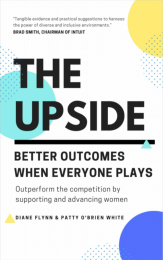
Talent makes all the difference. Whether commercial, creative, or competitive sport, the more gifted the team, the higher probability of success.
Nowhere is this more evident than in the hyper-demanding world of finance, particularly private equity where the tolerance for error is exceedingly low. Even so, the disproportionate focus on transaction value and capital raised is somewhat surprising. Like many fields of endeavor, there’s not enough attention placed on talent.
Forward-looking organizations, not just in the corner of the world that PE occupies, are placing much more attention on the nature and quality of talent. My firm was founded more than four decades ago on the principle that a broader mix of talent—not just former investment bankers and lawyers - but also proven operating executives — not only leads to better decision making, but better business building.
In the private capital industry, the $7.5 trillion under management globally cannot be expected to outperform if it is controlled by a narrow group of white males. Diane Flynn and Patty White are right to point out the need – particularly given the capital at stake and the value at stake – and the urgency to select and develop staffing architectures that harness the best talent available no matter the gender, race or nationality. Flynn and White in The Upside demonstrate that in building great and sustainable businesses, diversity is also critically important.
While the advent of talent management in the PE industry, among others, is a relatively new phenomenon, managing diversity and inclusion is a relatively untested phenomenon and still just beginning. The Upside offers a compelling framework on how to think about progressing diversity within companies, supporting career paths that lead to leadership positions, to board membership and even beyond. We instinctively appreciate from experience that broader and more diverse cultures lead to better performance.
We applaud Flynn and White’s book which presents a compelling business case for gender parity and offers important insights that are relevant to senior leadership and HR and both women and men. The volume offers practical solutions for a range of common challenges, from developing c-level sponsorship to creating diverse candidate pipelines and supporting career paths to leadership and board positions.
The market is ultimately efficient and it is not unreasonable to expect to see Flynn and White’s vision realized, as organizations of all types recognize the benefits of diversity and of creating more balanced talent rosters than they’ve had in the past. As The Upside states, “All employees—starting with senior leadership—acknowledge that they have a role and responsibility in developing a company culture where diversity exists and all employees thrive.”
This leads me to my last point: it is on each of us to re-invest, refresh and re-commit to building diverse cultures so we remain both relevant and competitive. So, while there’s a long way to go, I am optimistic that with persistence and creativity, Diane Flynn and Patty White’s vision will be realized.
Don Gogel
CEO and Chairman
Clayton, Dubilier & Rice
